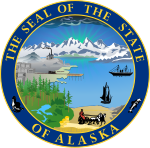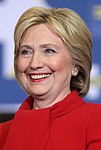
Super Tuesday is the United States presidential primary election day in February or March when the greatest number of U.S. states hold primary elections and caucuses. Approximately one-third of all delegates to the presidential nominating conventions can be won on Super Tuesday, more than on any other day. The results on Super Tuesday are therefore a strong indicator of the likely eventual presidential nominee of each political party.

The Nevada presidential caucuses are an electoral event in which citizens met in precinct caucuses to elect delegates to the corresponding county conventions. In 2021, Harry Reid passed legislation (AB321) to include primaries in hopes of increasing voter turn-out. Nevada has for decades and still does have a caucus. The caucus is where the delegates receive the votes that will be carried to the National Convention and not the primaries. There are 17 counties in Nevada and the state has 26 delegates. The Nevada caucuses began in 1981. The Kerry/Dean caucus was held on February 14, 2004. In 2008 the DNC gave Nevada the official first in the west status reflecting the growing importance of the West as well as Nevada's electoral bellwether status. The 2008 Nevada caucuses were the third major electoral event in the nominating process for President of the United States. In 2016, the Democratic caucus was held on February 20 and the Republican caucus was held on February 23.

Presidential primaries and caucuses were organized by the Democratic Party to select the 4,051 delegates to the 2016 Democratic National Convention held July 25–28 and determine the nominee for president in the 2016 United States presidential election. The elections took place within all fifty U.S. states, the District of Columbia, five U.S. territories, and Democrats Abroad and occurred between February 1 and June 14, 2016.
The following is a timeline of major events leading up to, during, and after the 2016 United States presidential election. The election was the 58th quadrennial United States presidential election, held on November 8, 2016. The presidential primaries and caucuses were held between February 1 and June 14, 2016, staggered among the 50 states, Washington, D.C., and U.S. territories. The U.S. Congress certified the electoral result on January 6, 2017, and the new president and vice president were inaugurated on January 20, 2017.

In the 2016 presidential campaign, Vermont Senator Bernie Sanders sought the Democratic Party's nomination in a field of six major candidates and was the runner up with 46% of the pledged delegates behind former Secretary of State Hillary Clinton, who won the contest with 54%. Sanders, the junior United States senator and former Representative from Vermont, began with an informal announcement on April 30, 2015, and a formal announcement that he planned to seek the Democratic Party's nomination for President of the United States on May 26, 2015, in Burlington, Vermont. Sanders had been considered a potential candidate for president since at least September 2014. Though he had previously run as an independent, he routinely caucused with the Democratic Party, as many of his views align with Democrats. Running as a Democrat made it easier to participate in debates and get his name on state ballots.
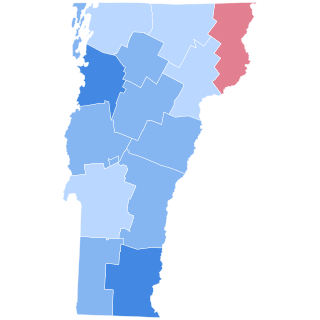
The 2016 United States presidential election in Vermont was held on November 8, 2016, as part of the 2016 United States presidential election in which all 50 states plus the District of Columbia participated. Vermont voters chose three electors to represent them in the Electoral College via a popular vote pitting the Republican Party's nominee, businessman Donald Trump, and running mate Indiana Governor Mike Pence against Democratic Party nominee, former Secretary of State Hillary Clinton and her running mate, Virginia Senator Tim Kaine. Independent Vermont Senator Bernie Sanders received unsolicited write-in votes.

The 2016 Iowa Democratic presidential caucuses were held on Monday February 1 in Iowa, as usual marking the Democratic Party's first nominating contest in their series of presidential primaries ahead of the 2016 presidential election.

The 2016 Idaho Democratic presidential caucuses took place on March 22 in the U.S. state of Idaho as one of the Democratic Party's primaries ahead of the 2016 presidential election.
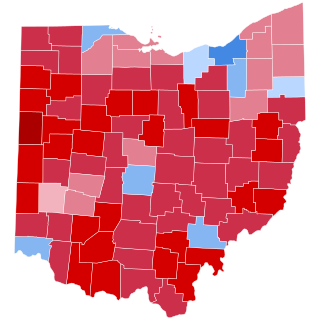
The 2016 United States presidential election in Ohio was held on Tuesday, November 8, 2016, as part of the 2016 United States presidential election in which all 50 states plus the District of Columbia participated. Ohio voters chose electors to represent them in the Electoral College via a popular vote, pitting the Republican Party's nominee, businessman Donald Trump, and running mate Indiana Governor Mike Pence against Democratic Party nominee, former Secretary of State Hillary Clinton, and her running mate Virginia Senator Tim Kaine. Ohio had 18 electoral votes in the Electoral College.

The 2016 Nevada Democratic presidential caucuses was held on saturday February 20 in the U.S. state of Nevada, traditionally marking the Democratic Party's third nominating contest in their series of presidential primaries ahead of the 2016 presidential election. The Republican Party held its South Carolina primary on the same day, while their own Nevada caucuses took place on February 23.

The 2016 Colorado Democratic presidential caucuses took place on March 1 in the U.S. state of Colorado as one of the Democratic Party's primaries ahead of the 2016 presidential election.
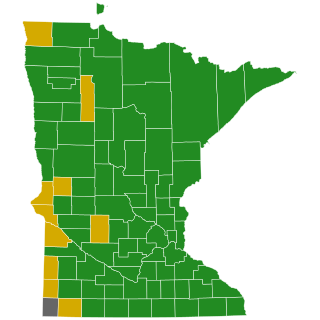
The 2016 Minnesota Democratic presidential caucuses took place on March 1 in the U.S. state of Minnesota as one of the Democratic Party's primaries ahead of the 2016 presidential election.

The 2016 Hawaii Democratic presidential caucuses were held on March 26 in the U.S. state of Hawaii as one of the Democratic Party's statewide nomination contests ahead of the 2016 presidential election.

The 2016 Washington Democratic presidential caucuses were held on March 26, 2016, in the U.S. state of Washington as one of the Democratic Party's primaries ahead of the 2016 presidential election.

The 2016 California Democratic presidential primary was held on June 7 in the U.S. state of California as one of the Democratic Party's primaries ahead of the 2016 presidential election.

The 2016 North Dakota Democratic presidential caucuses were held on June 7 in the U.S. state of North Dakota as one of the Democratic Party's primaries ahead of the 2016 presidential election.

Presidential primaries and caucuses were organized by the Democratic Party to select the 3,979 pledged delegates to the 2020 Democratic National Convention held on August 17–20 to determine the party's nominee for president in the 2020 United States presidential election. The elections took place in all 50 U.S. states, the District of Columbia, five U.S. territories, and through Democrats Abroad, and occurred between February 3 and August 11.

The 2020 Nevada Democratic presidential caucuses took place on February 22, 2020, with early voting on February 14–18, and was the third nominating contest in the Democratic Party primaries for the 2020 presidential election, following the New Hampshire primary the week before. The Nevada caucuses were a closed caucus, meaning that only registered Democrats could vote in this caucus. The state awarded 49 delegates towards the national convention, of which 36 were pledged delegates allocated on the basis of the results of the caucuses.

The 2020 Alaska Democratic presidential primary had been scheduled to take place on April 4, 2020, in the Democratic Party primaries for the 2020 presidential election, but in-person voting was cancelled due to the COVID-19 pandemic and mail-in voting was extended to April 10, 2020. The Alaska primary was a closed party-run primary, with the state awarding 19 delegates to the 2020 Democratic National Convention, of which 15 were pledged delegates allocated on the basis of the results of the primary. Voters cast ranked-choice voting ballots, with a voter's ballot counting for four ranked backup choices if their original choice was in last place and below the 15 percent threshold for winning delegates.
The following is a timeline of the 2020 Democratic Party presidential primaries in the United States, beginning after the election of Donald Trump in the 2016 United States presidential election. Joe Biden won the primary and eventually defeated Trump in the 2020 United States presidential election.

